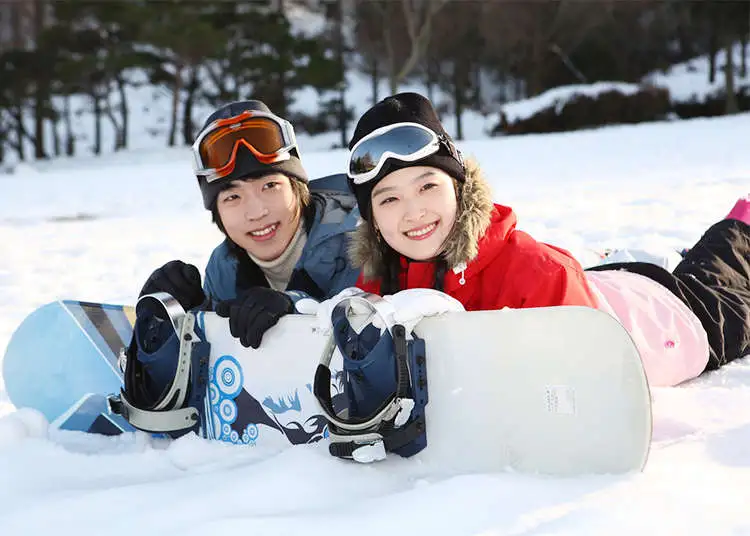A Guide to Enjoy Snowboarding Safely

Are you ready to hit the slopes and experience the thrill of snowboarding? Before you strap on your board and head down the mountain, it’s important to know how to enjoy this exhilarating sport safely. Snowboarding can be a lot of fun, but it also comes with its own set of risks. From choosing the right equipment to mastering proper techniques, there are many things you can do to minimize your chances of getting hurt while snowboarding. In this guide, we’ll take a closer look at some essential safety tips for snowboarding, as well as common injuries and how to prevent them. Whether you’re a seasoned pro or a beginner hitting the slopes for the first time, this guide will help you stay safe while enjoying all that snowboarding has to offer.
Snowboarding Safety Tips
When it comes to snowboarding, safety should always be your top priority. Before hitting the slopes, make sure you are aware of some basic safety tips that can help prevent accidents and injuries. Firstly, always wear a helmet. A helmet can protect your head from serious injuries in case of a fall or collision with another rider.
Secondly, make sure you dress appropriately for the weather conditions. Wear layers of clothing that will keep you warm and dry, but also allow for ventilation if you start to overheat. It’s also important to wear goggles to protect your eyes from the sun’s glare and wind.
Thirdly, be aware of your surroundings at all times. Look out for other riders and obstacles on the slope, such as trees or rocks. Always follow the rules and signs posted by the ski resort or park.
Lastly, never ride alone. Always go snowboarding with a friend or group of friends who can look out for each other and provide assistance in case of an emergency.
By following these simple safety tips, you can ensure a fun and safe snowboarding experience on the slopes.
The Right Equipment for Snowboarding
When it comes to snowboarding, having the right equipment is crucial for both safety and enjoyment. The most important piece of equipment is, of course, the snowboard itself. It’s essential to choose a board that suits your skill level and riding style. Beginners should opt for a softer, more flexible board that’s easier to control, while advanced riders may prefer a stiffer board for greater speed and precision.
Along with the snowboard, you’ll need boots that fit well and provide good support. Look for boots with a snug fit that don’t allow your foot to move around too much inside. It’s also important to choose bindings that match your riding style and ability level. Beginners may want to start with softer bindings that offer more forgiveness, while advanced riders may prefer stiffer bindings for greater response.
Other important pieces of equipment include a helmet to protect your head from injury, goggles to protect your eyes from wind and sun glare, and appropriate clothing layers to keep you warm and dry on the mountain. By investing in quality equipment that fits well and meets your needs as a rider, you can enjoy snowboarding safely and comfortably all season long.
proper Snowboarding Techniques
When it comes to snowboarding, proper technique is crucial for both safety and enjoyment. One of the most important techniques to master is maintaining balance and control while riding down the mountain. This means keeping your weight centered over your board and using your legs to make turns rather than relying on your upper body.
Another key technique is learning how to carve. Carving involves using the edges of your board to make smooth, controlled turns down the mountain. It takes practice and patience, but once you master carving, you’ll be able to ride with more speed and confidence.
It’s also important to know how to stop properly. The most effective way to stop is by using a heel-side or toe-side edge stop. To perform a heel-side edge stop, shift your weight onto your heels and press down on the back of your board with your back foot. To perform a toe-side edge stop, shift your weight onto your toes and press down on the front of your board with your front foot.
By mastering these basic techniques, you’ll be well on your way to enjoying snowboarding safely and confidently. Remember that practice makes perfect, so don’t be afraid to take lessons or spend time on the bunny slopes before tackling more challenging terrain.
Common Snowboarding Injuries and How to Prevent Them
Snowboarding is an exhilarating sport that can be enjoyed by people of all ages and skill levels. However, like any other physical activity, there are risks involved. Common snowboarding injuries include wrist fractures, ankle sprains, knee injuries, and head trauma. These injuries can be painful and even life-threatening in some cases.
To prevent these injuries, it is important to take certain precautions before hitting the slopes. Firstly, always wear protective gear such as a helmet, wrist guards, and knee pads. This will help cushion your falls and protect your vulnerable joints from injury. Secondly, make sure you warm up properly before starting your run. Stretching exercises can help improve flexibility and reduce the risk of muscle strains.
Another way to prevent snowboarding injuries is to practice proper technique. This includes maintaining a balanced stance on the board, keeping your weight centered over the board at all times, and avoiding sudden movements or jerky motions that can throw you off balance.
By following these tips and taking necessary precautions, you can enjoy snowboarding safely without worrying about getting injured. Remember to always listen to your body and take breaks when needed. With a little bit of preparation and common sense, you can have a fun-filled day on the slopes without any mishaps!
Snowboarding Safety for Children
When it comes to snowboarding safety, it’s important not to forget about the little ones. Children can be particularly vulnerable on the slopes, so it’s essential to take extra precautions when they’re learning how to snowboard.
First and foremost, make sure your child is wearing a properly-fitted helmet at all times. This will protect their head in case of a fall or collision. Additionally, consider enrolling them in lessons with a qualified instructor who can teach them proper technique and safety measures. It’s also important to keep an eye on your child while they’re snowboarding and ensure they stay within their skill level.
Another key aspect of snowboarding safety for children is making sure they stay warm and hydrated. Dress them in layers that can be easily removed or added as needed, and make sure they have access to water throughout the day.
By taking these steps, you can help ensure that your child has a safe and enjoyable experience while learning how to snowboard.
Conclusion
In conclusion, snowboarding can be a thrilling and enjoyable experience, but it is important to prioritize safety while on the slopes. By following the tips outlined in this guide, such as wearing appropriate gear, practicing proper techniques, and being aware of potential hazards, you can reduce your risk of injury and make the most out of your snowboarding adventures. Remember to always stay alert and aware of your surroundings, especially when riding with others or in crowded areas. With these precautions in mind, you can have a fun and safe time shredding down the mountain. Happy snowboarding!






